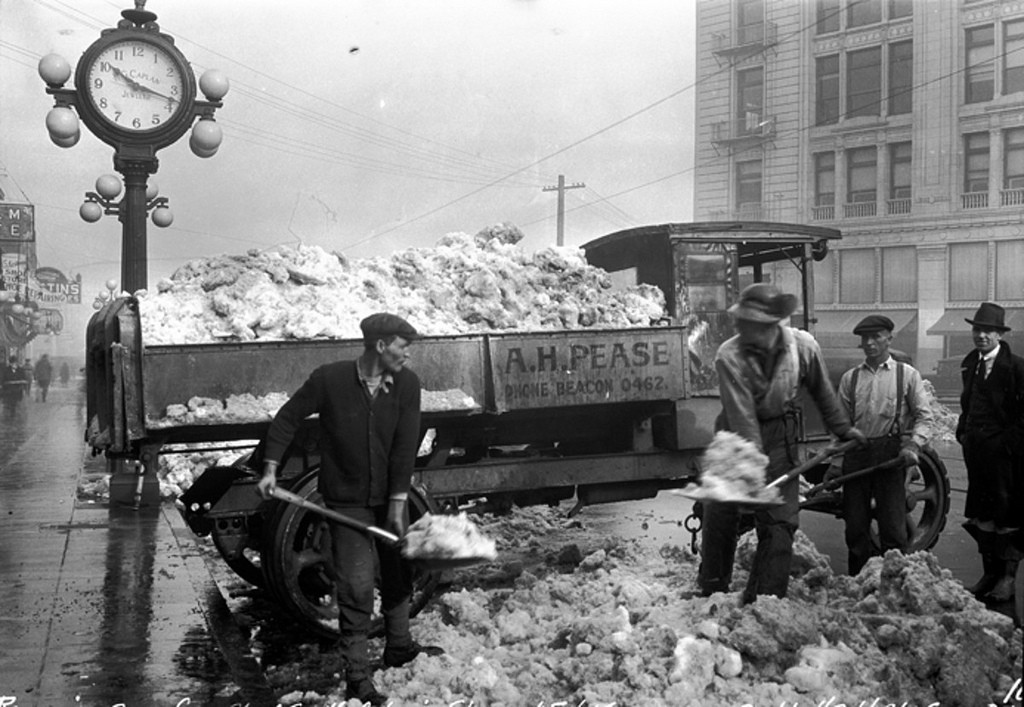It is estimated that more than 1000 people die every year from heart attacks caused by shoveling snow. While it is true that people who are over 55 and have underlying health problems are more likely to experience cardiac arrest, a surprising number of younger and seemingly-healthy people die as well. Let’s take a look at what makes shoveling snow such a dangerous activity, because some of the reasons may be surprising.
Perfect Storm
The physical strain of shoveling is just one reason that heart attacks are not uncommon. When it’s cold outside, our bodies start to conserve heat by moving blood from the extremities into the core. Part of this process involves the constriction of the arteries and veins. This helps to trap blood in the core while also minimizing heat loss in order to protect our organs.
When this constriction occurs, blood pressure goes up, and arteries that are already clogged up can become blocked. At the same time, the heart must pump harder in order to properly regulate blood flow and temperatures. When we shovel, we tend to hold our breath while lifting heavy loads, and this places further strain on the heart as it tries to move as much oxygen through the bloodstream as well. Finally, the weight and exertion of lifting heavy loads places further stress on the circulatory system, and this can be too much for some people to bear.
Timing is Everything
Another interesting fact about cardiac arrest and shoveling has to do with the time of day. As it turns out, most people shovel in the morning, which happens to be the time when the body’s natural circadian rhythm is not geared up for bouts of intense, strenuous activity. Believe it or not, the body is more capable of exerting this type of energy in the afternoon or evening. People who are already at risk for heart disease can significantly increase their chances of having a heart attack if they shovel heavy snow in the morning.
Fitness Matters
Shoveling snow places enormous strain on our upper body and arms. These areas don’t have as much muscle as our legs, and lifting the heavy weight of snow causes a proportionally-greater amount of exertion on the circulatory system. Another reason so many people have heart attacks is because they don’t exercise on a regular basis. Considering that we may shovel snow a few times per year, the shock to the system can be more than the body can bear.
The lesson to learn from this is that the more fit we are, the less-likely we are to place dangerous levels of strain on our bodies. It’s important to remember that moving snow that is only a few inches deep from the average driveway can be enough to overwhelm the heart. In fact, studies have shown that shoveling snow is significantly more strenuous than the cardiac stress tests performed on treadmills. The more in shape we are, or the more we are used to getting regular physical activity throughout the year plays a significant role in decreasing the likelihood of having a heart attack while shoveling.
Finally, it’s important to remember the difference between light and heavy, wet snow, and the impact that it has on the body. We can move more than a ton of snow from shoveling the average driveway, and that’s a lot more work, in a short amount of time, than many people are used to performing.
Reducing Risk
Aside from avoiding being sedentary and taking care of the heart, all of us can reduce risk by following some simple guidelines. First, dress in layers and wear gloves and a hat. Conserving heat and keeping the body warm will help to prevent the heart from jumping into overdrive. Second, don’t hold your breath as much while shoveling in order to minimize the impact of oxygen deprivation. Finally, take frequent breaks when shoveling heavy snow in order to catch your breath and let your heart rate slow down.
Another good suggestion is to push snow instead of lifting it whenever possible. This will allow you to distribute forces more evenly across the body and reduce strain and over-exertion. You can also shovel a couple of inches off the top at a time and keep repeating until the snow has been cleared as well.
Finally, while snow blowers do make a huge difference in terms of reducing the amount of exertion associated with shoveling, they also can cause significant strain on the body. Think of the weight of the machine coupled with the amount of force you need to maneuver it in order to plow, and it’s easy to see how using a snowblower can be quite strenuous.
Use good judgment and try to avoid taking unnecessary risks if you have to shovel heavy snow this winter. Heart attacks during shoveling can strike without warning, and even those in decent physical shape are at risk if they are not careful.

